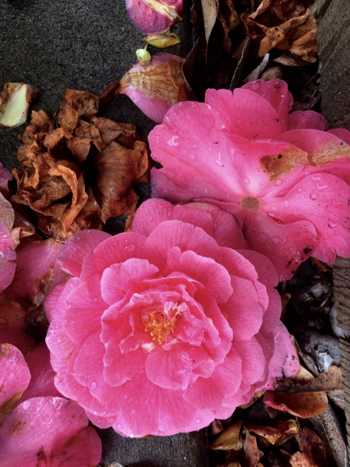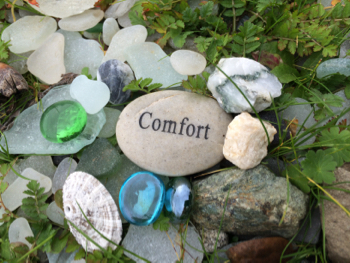The Heart and the Head

“Love is always the answer. Love comes forth from the heart and the head is never involved. When I’m coming from Love, I feel it in my expanding heart. As soon as I begin thinking, I know I have stepped out of Love. Love is always a feeling. Love is pure and unencumbered, it can be nothing else.” ~Therese
Given that we are discussing real love, yes, it is the only satisfying answer to most conundrums. Love addresses most emotional needs at their core and paves roads to harmony. Love creates an atmosphere in which wisdom can flourish—which the head on its own cannot do.
I would like to expand on “the head is never involved.” I hold Therese’s comment to be true for those who like herself are grounded in genuine love, who can access love through sensing and feeling. This love is indeed pure and unencumbered, and does not require the head.
When the head functions with respect for the heart, operating on the directives of the heart, there is no error.
When we are not able to access real love, we become more prone to confusion. Passions and reactive emotion become confused or entangled with real love. Resulting emotionally-based directives may be unwise and cause complications if we act on them. Real love may be present, but it has become mixed with need, mixed motivations (such as trying to please people, which is often a subtle type of control), lust, cultural or religious conditioning, and so forth.
Buried wounds create confusion about love. The deepest wound that virtually everyone shares is separation from the Divine.
When we try to love or to act in right and virtuous ways, these efforts can be more about trying to be worthy of love or to obtain it than they are about actual love itself. Pure love leads naturally to virtuous action. Trying hard to be virtuous can be a defense against feeling there is something wrong with us, or against feeling unworthy. We may assume that love must be earned, that we are inherently flawed, or that love is not natural and abundant.
Conditional approval—social, peer or parental—must not be confused with love, or sought as a substitute. Ultimately, that will not work. To heal ourselves we need to be able to generate and absorb real love, deeply into the places that drive our quests for approval from the outside.
In the patterns mentioned above we see that head efforts—including our interpretation of events and our self-assessments—often distract us from going directly to love itself.
One good use of the head in all this is to make different distinctions such as discerning love from not-love. Once we can FEEL love directly, making these distinctions is no longer necessary. We can just tell, without a lot of process. It gets obvious. Before we have identified real love, or purified our love, learning to step back and observe our personal motivations assists with developing discernment. Discernment allows us to move with wisdom.
Being balanced and healthy requires using all three centers—head, heart, and body— to think, feel and sense at the same time, integrating the functions of these centers. When the centers are in balance and used in concert together, intuition and wisdom become much more available, and pure love is significantly easier to access.
When you are challenged or confused about love, what is going on for you?
Is this primarily about motivations, needs, ideas about what you ‘should be’ feeling, an imbalance between your three centers, or something else?
Is there one center you overuse or underuse?
How does this habit of Being impact your relationship with love?
Thank you, Therese, for the inspiration. 🙂
Be sure to catch Kelly’s comment under last week’s post. It’s as if she put in life-situation examples for all of concepts in this post.




 balance between acting on our best assessment and accepting what is going on. This does not mean we accept it without acting to change it. It means that we act from inner peace and intuitive presence instead of reactive emotion.
balance between acting on our best assessment and accepting what is going on. This does not mean we accept it without acting to change it. It means that we act from inner peace and intuitive presence instead of reactive emotion.
 rejecting them. Intentionally breathe tender compassion and love into those places, feeling them, yet gradually filling the body and heart areas they occupy with kindness and gentleness.
rejecting them. Intentionally breathe tender compassion and love into those places, feeling them, yet gradually filling the body and heart areas they occupy with kindness and gentleness.
 disproportionate to the averages. It amazed and delighted me how quickly and naturally spiritually alive topics arose between us. I spent a lot of travel time on my own between meeting some wonderful people and having great conversations.
disproportionate to the averages. It amazed and delighted me how quickly and naturally spiritually alive topics arose between us. I spent a lot of travel time on my own between meeting some wonderful people and having great conversations. too directly with those who they somehow sense can ‘see.’ A character in a fiction audiobook I recently listened to said: “Intuition is more threatening than nudity.” Several friends added that being around an intuitive “feels like being naked—but more so.”
too directly with those who they somehow sense can ‘see.’ A character in a fiction audiobook I recently listened to said: “Intuition is more threatening than nudity.” Several friends added that being around an intuitive “feels like being naked—but more so.”









 the difference between self pity and healthy experience of difficult emotions. Tears, for example, are often equated with self pity. If we shame ourselves for tears, we block the relief, compassion, and insight that so often follow sincere expression and release of pain.
the difference between self pity and healthy experience of difficult emotions. Tears, for example, are often equated with self pity. If we shame ourselves for tears, we block the relief, compassion, and insight that so often follow sincere expression and release of pain.
